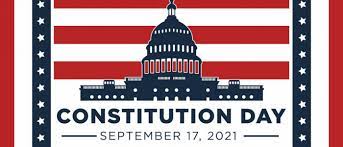For years, a respected annual survey of civics knowledge among American adults has provided mocking headlines about the low percentage who can’t correctly name basic constitutional rights or the three branches of government.
The results are in and more can name the executive, judiciary and legislative branches than at any other time in the survey’s -year history though plenty still can’t. But the bigger news is on a question about the deadly Jan. insurrection at the U.S. Capitol, staged by supporters of President Donald Trump trying to stop Congress from certifying Joe Biden’s presidential election victory.
Respondents of the annual Constitution Day Civics Survey by the Annenberg Public Policy Center of the University of Pennsylvania were asked whether arresting people who entered the Capitol to disrupt the certification of the presidential election violated the Constitution.
The sobering results: percent said that arresting insurrectionists violated the Constitution because the insurrectionists were only exercising their constitutional right to petition the government for a redress of grievances. The breakdown of who agreed with this statement: percent of self-identified conservatives, percent of self-identified moderates, and percent of self-described liberals.
An equal percentage of survey respondents — percent — said the statement was not accurate and that arresting the insurrectionists did not violate the Constitution.
“It is a sad commentary on the public’s civic literacy that half of the public considers an effort to disrupt the certification of an election an exercise of a First Amendment right,” said Kathleen Hall Jamieson, director of the Annenberg Center.
Massive investment in social studies and civics education proposed to address eroding trust in democratic institutions Fifty-six percent of U.S. adults correctly named all three branches of government executive, judicial, legislative, up from percent in, and the highest since the survey began in. That means that in, a not-insignificant percent couldn’t name them. That would apparently include Tommy Tuberville, a former Auburn football coach who, in November, had just been elected to the U.S. Senate in Alabama and talked publicly about the three branches of the federal government but misidentified them, saying “Our government wasn’t set up for one group to have all three branches of government. … You know, the House, the Senate and the executive.”From the Constitution Day Civics Survey by the Annenberg Public Policy Center of the University of Pennsylvania. Seventy-four percent named freedom of speech as one of the basic constitutionally protected rights; last year it was percent. Freedom of religion was named by percent — up from percent in. Half of the respondents could name freedom of the press — up from percent a year ago — as a right, but the only percent named the right to petition the government, up from percent a year ago. Thirty percent mentioned the right of people to peaceably assemble, compared with percent in. The respondents had more trouble understanding the First Amendment with a question about. Sixty-one percent incorrectly said — which blocked Donald Trump from its platform after accusing him of using it to “incite violent insurrection” against the U.S. government — is required to permit all Americans to express themselves freely on under the First Amendment. The breakdown: percent of self-described conservatives said this, as did percent of moderates and percent of liberals. The First Amendment protects citizens from government censorship; is a private company. Only a percent of respondents knew that a U.S. senator’s term is six years and percent knew a representative serves for two years. Asked what it means when the Supreme Court rules – in a case, percent correctly chose “the decision is the law and needs to be followed.” But only a percent of respondents accurately said that the Supreme Court has final responsibility for determining whether an act by the president is constitutional — and they had three choices: the president, Congress or the court itself.
The nationally representative survey was launched in two years after Congress created Constitution Day, meant to increase Americans’ understanding of their own government. Sept. is Constitution Day when all schools receiving federal funding are supposed to offer an “educational program” on the Constitution. Congress doesn’t define what that should be, though, and there is no prescribed penalty for schools that do not do it.
Sept. was chosen because it was the last session of the Constitutional Convention in Philadelphia, during which the final version of the newly written Constitution was signed by delegates.
The survey was conducted by SSRS, an independent research company, on Aug., among, U.S. adults. It has a margin of error of plus or minus. percentage points.
After years of national lamenting about the state of civics education, there has been a push by legislatures in many states to improve it. A new initiative called Educating for American Democracy released a road map earlier this year for improving the teaching of social studies, and there is legislation in Congress concerning civics education.
And several months ago, the National Academy of Education, a nongovernmental nonprofit organization that aims to improve education with high-quality research, released a report on what civics education should look like, titled “Educating for Civic Reasoning and Discourse.
It says that beefed-up civics and history classes won’t be enough to prepare young people to engage in national conversations about complex social issues — and that civic learning should be distributed across all content areas from kindergarten to high school graduation.
The Annenberg survey found that in , percent of respondents said they had taken a civics course in high school that focused on the Constitution or judicial system, about the same as in previous years that the question has been asked. Forty-eight percent said they had taken a college course that focused on the U.S. system of government and the Constitution — more than the percent who said they had in and in earlier years.



